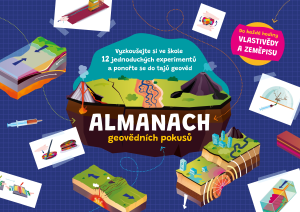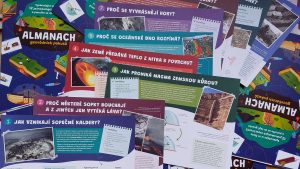Almanac of geoscience experiments: 12 Engaging Activities to Enrich Geology Lessons
Geology often remains on the sidelines in school education, despite being key to understanding the world around us. For teachers looking to enrich their lessons in science, social studies, or geography, the Almanac of Geoscience Experiments offers twelve simple activities that open a window into the fascinating world of geology.
The experiments demonstrate various geological processes, such as the formation of volcanic calderas, erosion, tectonic plate movement, or the modeling of heat flow from Earth’s interior to the surface. Pupils can try folding rock layers, simulate erosion using sand and water, or observe how magma releases gases. Each experiment is designed to be quick and easy to prepare, using readily available materials.
The almanac provides teachers with a practical and inspiring tool to make geology accessible and engaging for students of all ages.
Almanac was created by Petr Brož in collaboration with illustrator Lucie Škodová (Ajeejee). Text contributions were made by Matěj Machek, Ondřej Krýza and Lenka Špičáková. The work is published under a free license and may be freely distributed and used for any purpose, provided the authors are credited (texts: Petr Brož et al., illustrations: Lucie Škodová) and the CC BY-SA 3.0 license is preserved.
- Files for Home Home printing: sheets (PDF)
- Files for Professional Printing: experiment sheets, front cover and front cover with cutout template
- Illustrations and Photos for Download: (photos, illustrations)
1) How are volcanic calderas formed?
2) Why do some volcanos erupt but only lava flows from others?
3) How does magma rise through the Earth´s crust?
4) How does the Earth transfer heat from its core to its surface?
5) Why does the seafloor spread?
6) Why do some volcanic centres migrate?
7) Why are mountains folded?
8) How are rift valleys formed?
9) Why are some rocks folded?
10) Why does the earth beneath your feet liquify during an earthquake?
11) How do earthquakes originate?
12) A table-top river system













































